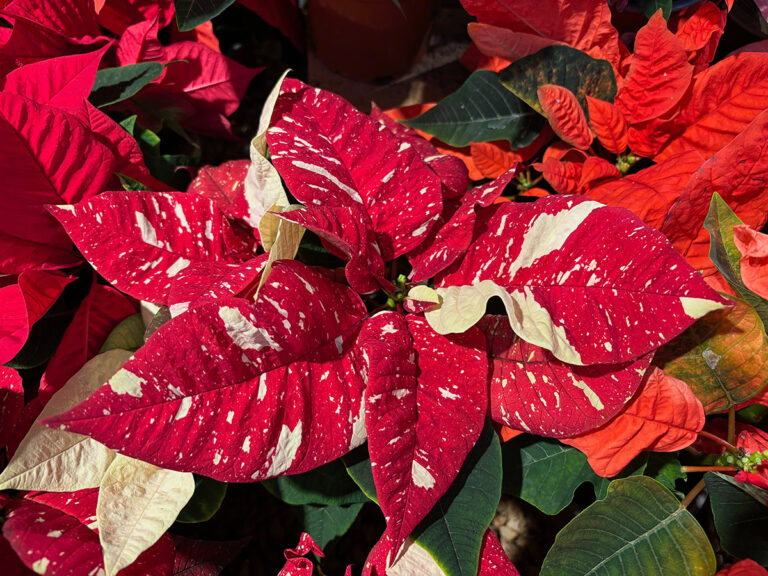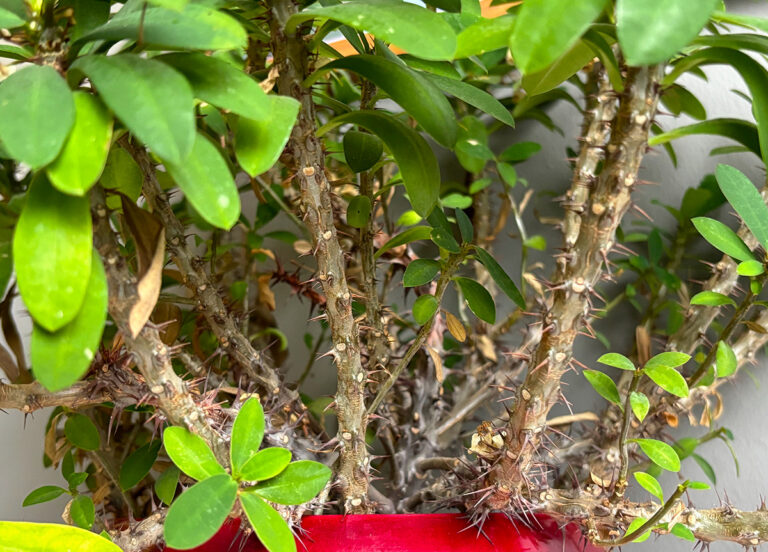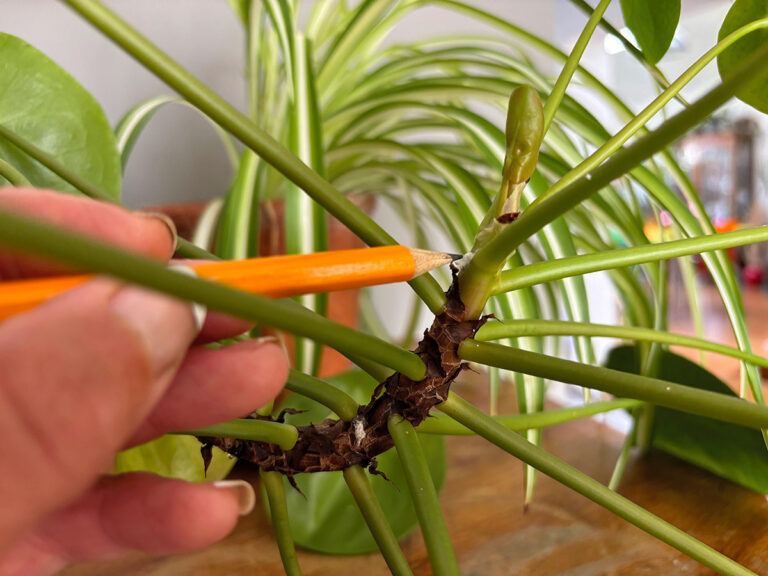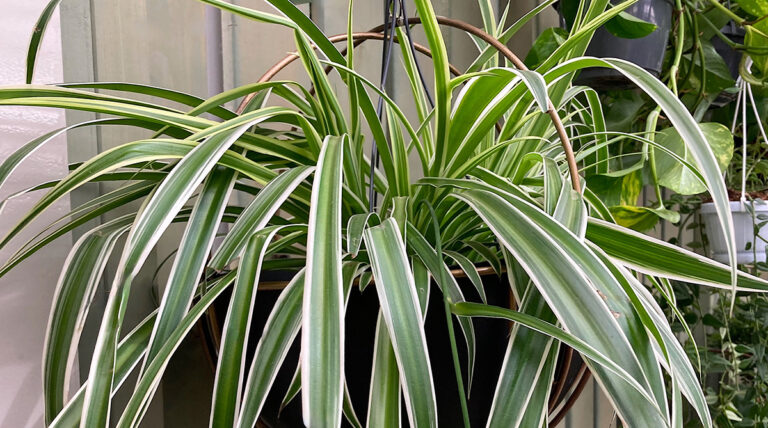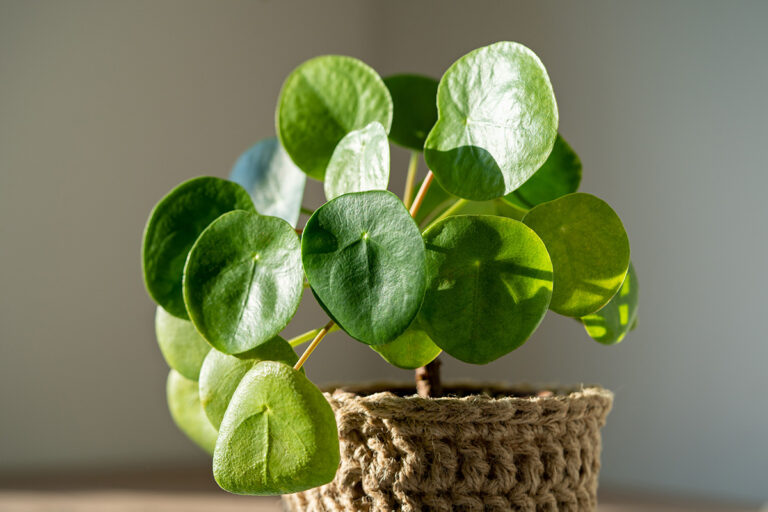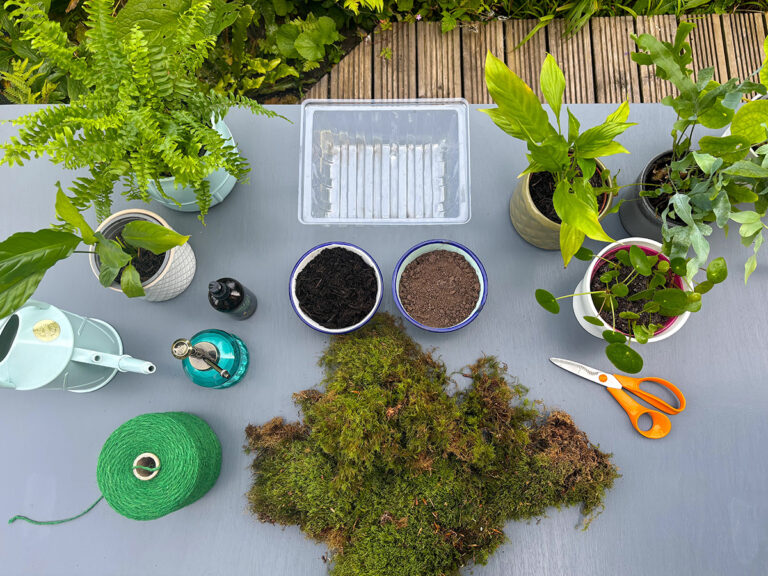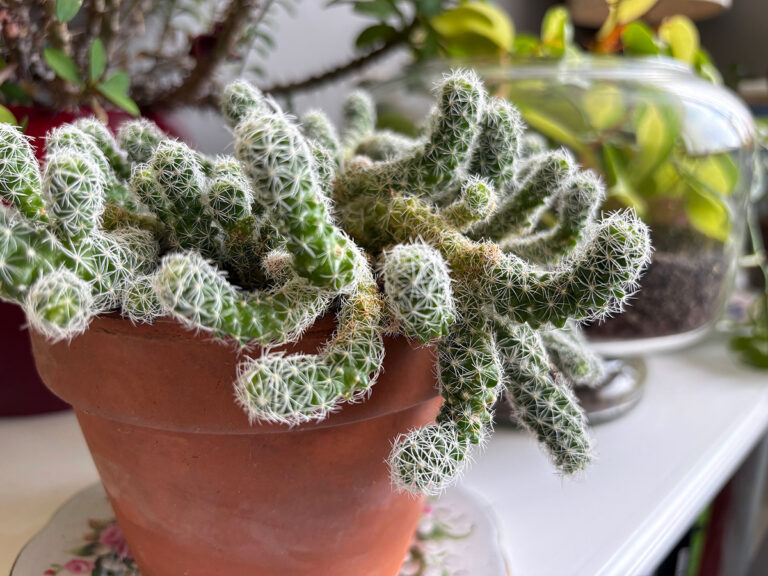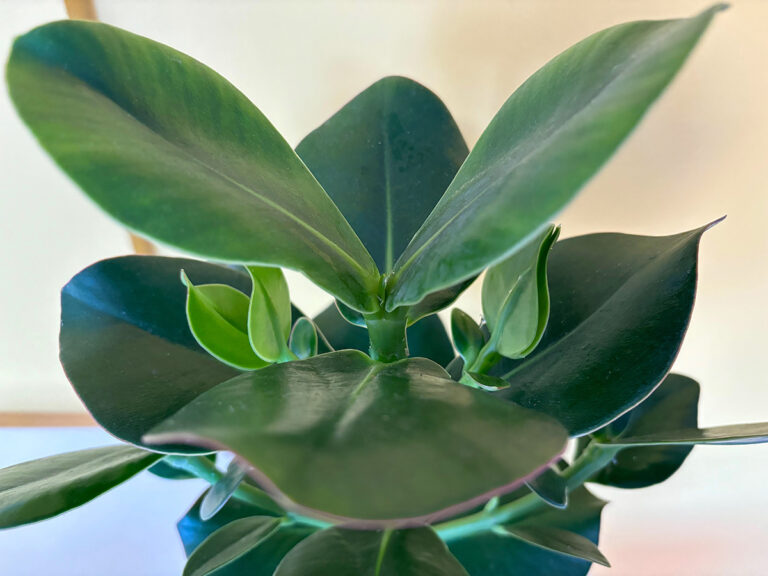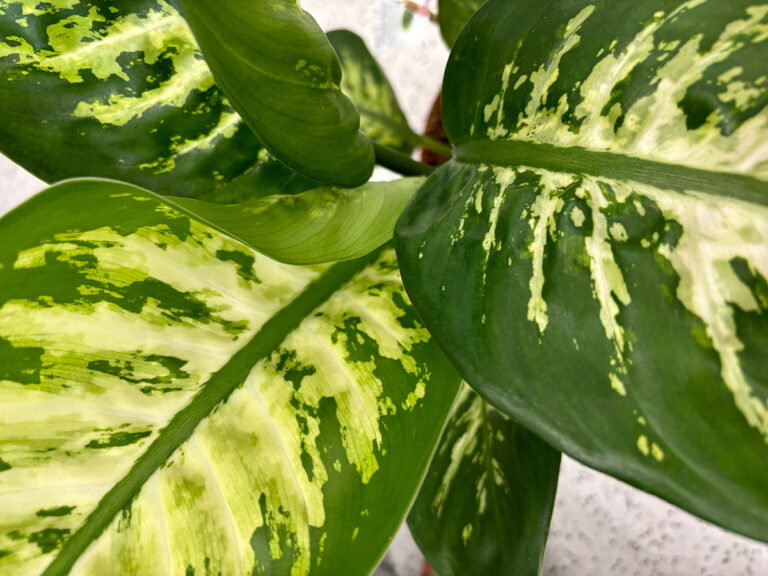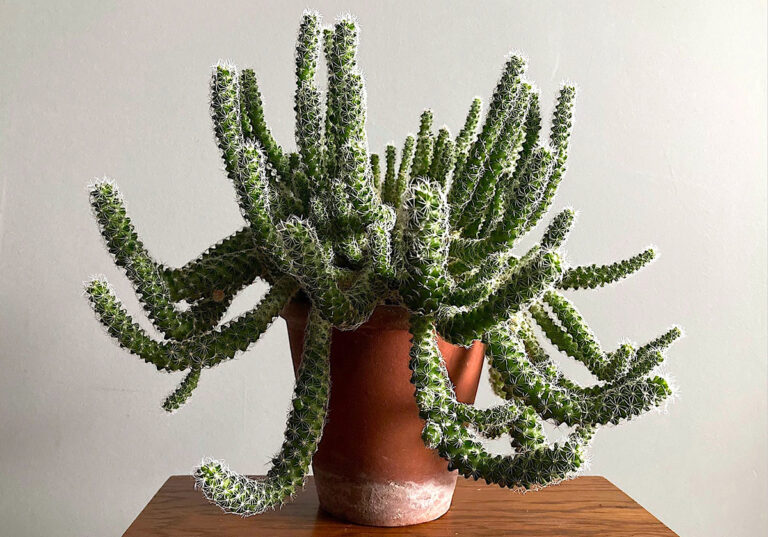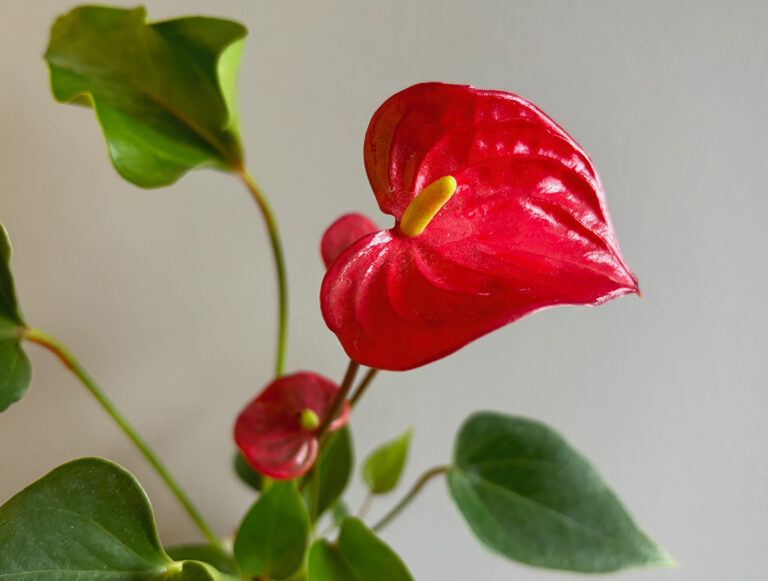Anthurium andreanum is known by many names, flamingo lily, painter’s palette, lacyleaf and flamingo flower to name a few but none seem to really nail the ethereal beauty of this plant. Its other worldly appearance could almost be mistaken for being plastic or a prop off a sci-fi set. Whatever you choose to call it Anthurium are beautiful and have won the Royal Horticultural Society’s Award of Garden Merit.
These evergreen perennial tropical plants are part of the Arum family and have heart-shaped leaves surrounding bright red, white or pink flowers which are actually leaves called ‘spathes’. Colourful spathes attract insects in the wild to pollinate the long yellow central spadix which is made up of lots of tiny flowers.
Anthurium andreanum are epiphytes native to Colombia and Ecuador and in the wild cling to trees. Find out how you can keep Anthurium andreanum thriving in your home.
Light
Anthurium, like many houseplants, love bright indirect light but leaves will scorch if placed in direct sunlight so find an appropriate spot in your home that gets bathed in natural light but is situated away from sunny south-facing windows.
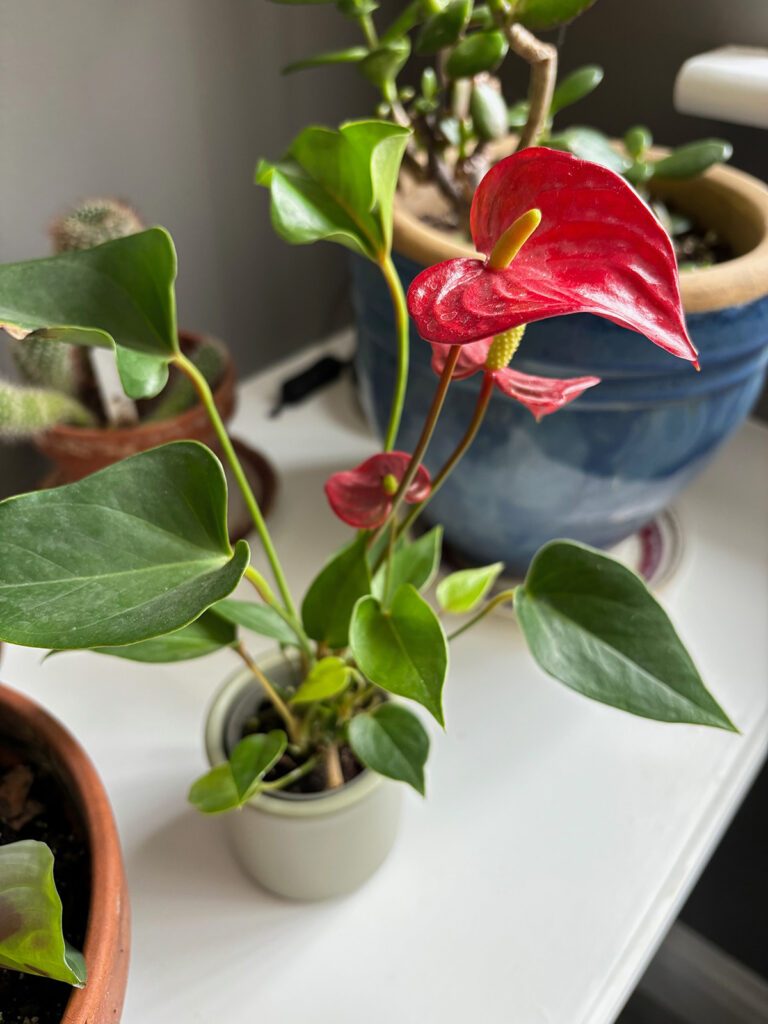
Water
Flamingo lilies are prone to root rot so a word of caution, wait until the top inch of soil is dry before watering from spring to summer; aim to water every week or two. Be mindful if your plant is drying out quickly or holding its moisture and adjust your watering schedule accordingly. Leave a longer gap from autumn to winter so roots are not left soggy.
Coming from tropical origins these houseplants love humidity which can sometimes be hard to achieve in our urban homes but good news these flowering Anthurium are capable of tolerating drier conditions. Regular misting between waterings will help.
A conservatory, bathroom or kitchen will provide a more humid environment but if you have other ideas for where you would like your houseplant to reside then just get pumping with that mister and your houseplants will be happy.
Foliage can be sprayed with rainwater or increase nutrients as well as humidity by using Plantsmith’s Perfecting Houseplant Care Mist; this will help compensate for our homes dry air by temporarily increasing the humidity surrounding your plant. It’s a win win!

Temperature
Although Anthurium thrive in more tropical temperatures they will grow just fine in our modest home temperatures; anywhere between 18-27°C (65-80°F). Keep them away from warm, drying radiators and draughty doors and windows; this is one houseplant that quietly gets on with it all by itself.
Feeding
Flamingo lilies are low maintenance and only need feeding once a month March to September; stop feeding over winter. Use Plantsmith’s Fortifying Houseplant Feed & Tonic or Plantsmith Nurturing Orchid Feed and Tonic; either dedicated houseplant food is ideal. These vegan and cruelty-free feeds have been especially formulated to contain a balance of essential nutrients and minerals to keep houseplants healthy.
Shake the orchid feed bottle then add 2.5 ml (approx. 2 pumps from 500ml bottle) or dilute a full pipette from the 100ml bottle per litre of tepid rainwater; mix then water the soil. Potassium, magnesium, iron and essential micro and macro nutrients will encourage glossy leaves and long lasting flowers and kelp extract will stimulate cell growth.
Do not over fertilise houseplants, this can be detrimental; over time mineral salts build up and can burn roots but by sparingly using a balanced houseplant food you can help keep houseplants healthy and reduce the likelihood of plants succumbing to pests and diseases.
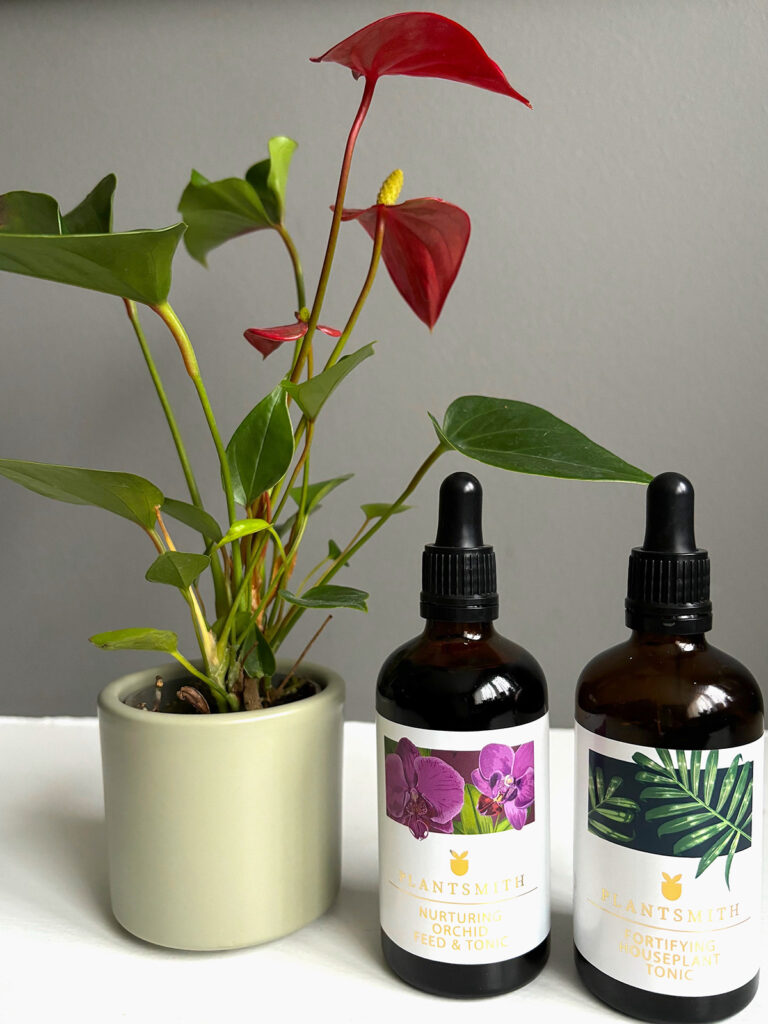
Soil
Pot your flamingo lily in orchid bark which is perfect for epiphyte’s roots or buy a ready-made peat-free houseplant compost. Alternatively make your own free-draining substrate by combining compost, horticultural grit, sand and perlite for aeration. Make sure pots have drainage holes so excess water can drain out of the bottom; prevent roots sitting in water or they may rot. Repot plant every couple of years.
Propagation
Propagate Anthurium andreanum by root or stem cuttings or dividing.
Root cuttings are super easy. Simply snip off an aerial root or two and dip in rooting hormone; pot on in compost.
To take stem cuttings cut a 10cm length of healthy stem with a couple of leaves. Pop the stem in a jug of water, either leave to let roots develop over the next few weeks or dab cutting in rooting hormone and plant in a pot of gritty compost. Be patient, roots can take six-eight weeks to emerge!
Or take your houseplant out of its pot and tease the roots apart; you can always wash soil off in rainwater to avoid damaging roots. Let the roots naturally divide into individual sections and pot on each new plant. When your houseplant needs repotting take this opportunity to divide the plant at the same time.
Always wear gloves when handling this plant as the sap can irritate skin.
Pests
Anthurium andreanum can succumb to sap suckers like mealybug, spider mites, and scale. Prevention is better than cure so stave off nasty pests by keeping your houseplants happy and healthy. Ensure your plant has the right levels of light and feed and has well-drained soil so they are not weakened by stress. Regularly spray with Plantsmith’s Bug Control Spray to deter an infestation and keep an eye out in the houseplant’s leaf joints or foliage; remove by hand if spotted.
Problem Solver
Safe for pets?
Be aware Anthurium andreanum is toxic to cats, dogs and us humans too so make sure the plant is not ingested. The plants contains calcium oxalate crystals which cause painfully swelling if swallowed.
No flowers
If your Anthurium is not flowering for a long period of time then change its living conditions, something is wrong. Either move it to a greater or lesser light source, increase or decrease watering and give it a good feed. When you do have flowers they will bloom for a staggering two to three months. Cut them back to the base once they’ve fade and this will encourage the next generation of blooms.
Yellow leaves
Yellowing leaves can be a sign of underwatering or overwatering, nutrient deficiency, an over-fertilised plant or even bleaching from strong light. Adjust your watering and feeding routine and maybe move your plant to a different location in the house and see if it improves.
Brown leaf edges
Check your houseplant’s humidity if leaf margins start to turn brown. Up your misting and move your plant to a more humid part of your home. Send your houseplant to the spa and let it bask in the bathroom surrounded by steam from a hot shower!
Root rot
In the wild Anthuriums are epiphytes found growing on trees so are used to their roots getting humidity from the air but not being wet all the time; if the root system turns mushy it is time to ease back on the watering and repot into fresh substrate. Let the soil dry and give roots a break before rewetting.
Fun Facts
The name Anthurium is derived from the Greek words for flower tail: anthos oura.
In favourable conditions Anthurium can pretty much bloom all year round.
Potted Anthurium symbolise hospitality so they make a great dinner party gift.





